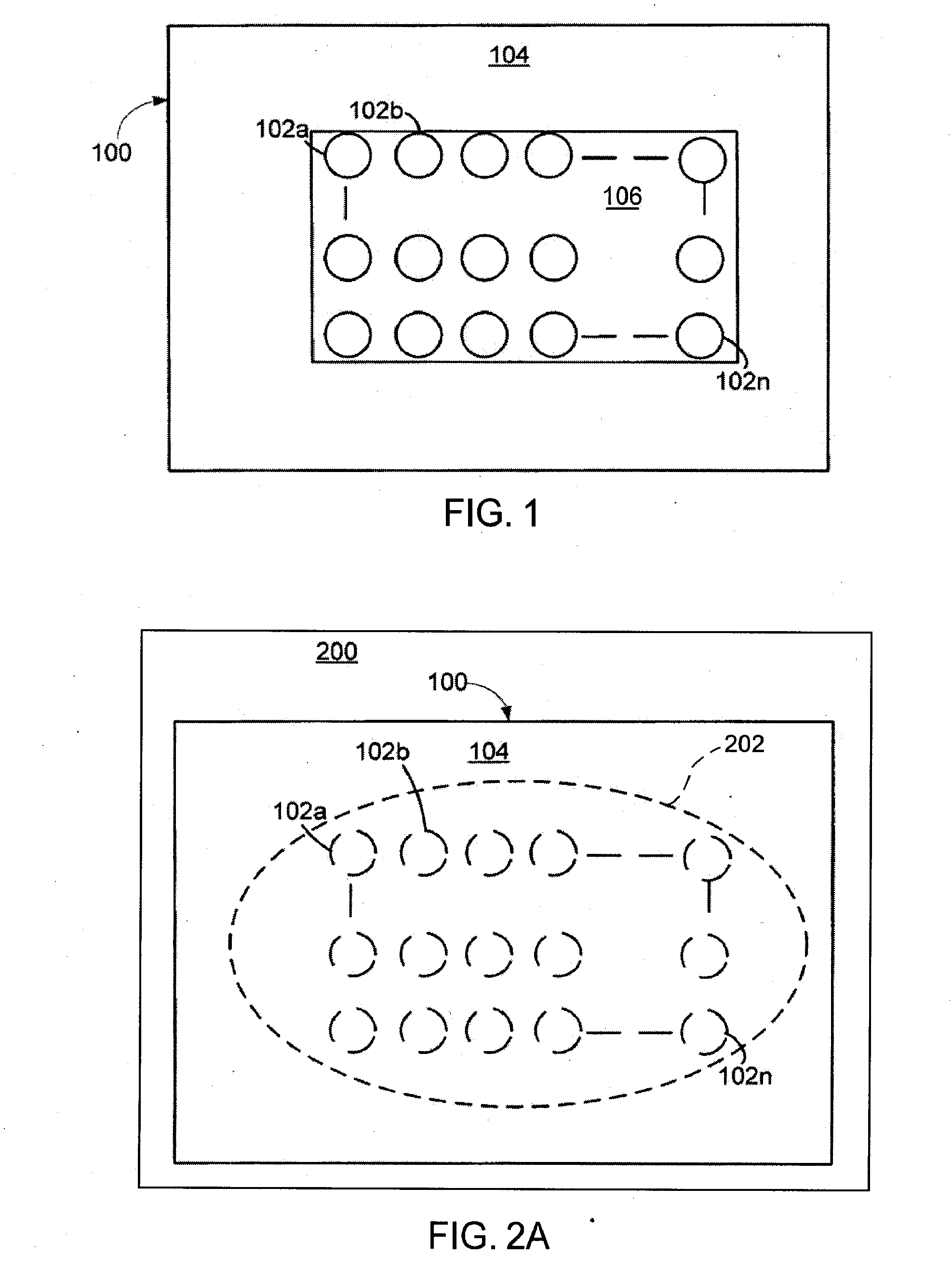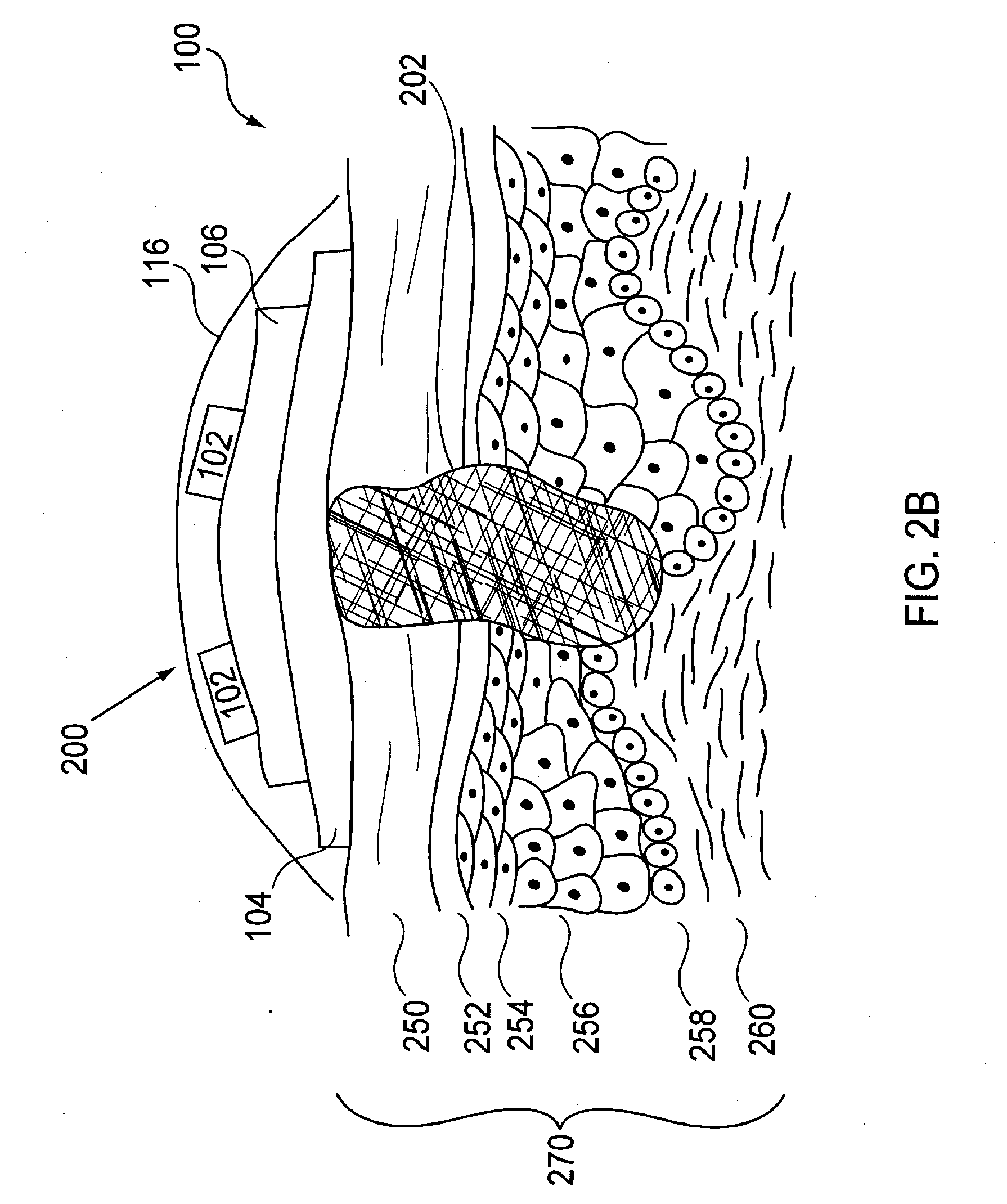Devices, Methods and Kits for Radiation Treatment via a Target Body Surface
- Summary
- Abstract
- Description
- Claims
- Application Information
AI Technical Summary
Benefits of technology
Problems solved by technology
Method used
Image
Examples
example 1
[0109] UV LED (310 nm) chips from S-ET (Columbia, S.C.) were used as one radiation (light in this case) source 102a; the chip was mounted on a gold patterned aluminum nitride sub-mount and further mounted on a Kovar header. The patterning was performed by Advanced Thin Film, Fremont, Calif. The chips were bonded to a eutectic metal layer (e.g. gold-tin alloy) which was deposited on parts of the gold portions of a sub-mount and then to a TO-46 (well-known to those skilled in the art) header package. An aluminum reflector was attached with epoxy to the header which serves to reflect the light toward the spectral conditioner (e.g. a lens in this case). In this example, a patient interface was not included in the assembly. The radiation applicator was then applied to the skin for approximately 14 minutes. At 14 minutes, the dose was sufficient to sunburn a region of one square centimeter (the region had previously been assessed to require 350 mJ / cm2 for an MED at 310 nm). The required v...
example 2
[0110] In another example, a radiation applicator was made using the materials and techniques described with respect to Example 1. However, a UV LED submount containing four LEDs was used for radiation source(s) 102 (e.g. 102a-102n) instead of the UV LED chips. This alternate radiation source 102 resulted in a sunburn over an area of 2 cm2 in approximately 3.5 minutes with a voltage of approximately 6 Volts and using 80 milliamps of current.
[0111] In applying the device of Example 2 to, for example, psoriasis, which has an average size of a diseased area of approximately 100 cm2 (approximately 1% of the body surface area of a patient), is capable of giving a patient a sunburn over a 100 cm2 area by applying a therapeutic dose via the 2 cm2 sized radiation applicators to 50 2 cm2 patches, one patch at a time, each for 3.5 minutes. Radiation applicator 100 is capable of delivering a therapeutic dose of ultraviolet light to these 50 patches, in approximately 50×3.5 minutes=175 minutes...
example 3
[0112] In this example, a covering (e.g. 513 in FIG. 5D) was applied directly over the UV LED 502. The silicone used, RTV615, available from GE Silicones was chosen for its patient compatability and its index of refraction which is well-matched to the surface of the LED 502. With this configuration, when the experiment in example 1 was repeated, a sunburn would be achieved in 8 minutes, indicating that the optical output was 612 micro Watts for this experiment, which is a 1.8 fold increase over experiment 1. The resulting device was more comfortable to wear. This example illustrates the manner in which covering 513 can be used to enhance optical output of the radiation source / s 502 in addition to improving the interface between the applicator and the body surface. As described above for FIGS. 5D-E, additional structural features can be included on covering 513 and mount 505 which can further enhance the radiation output from the applicator.
[0113] In another embodiment, radiation ap...
PUM
 Login to View More
Login to View More Abstract
Description
Claims
Application Information
 Login to View More
Login to View More - R&D
- Intellectual Property
- Life Sciences
- Materials
- Tech Scout
- Unparalleled Data Quality
- Higher Quality Content
- 60% Fewer Hallucinations
Browse by: Latest US Patents, China's latest patents, Technical Efficacy Thesaurus, Application Domain, Technology Topic, Popular Technical Reports.
© 2025 PatSnap. All rights reserved.Legal|Privacy policy|Modern Slavery Act Transparency Statement|Sitemap|About US| Contact US: help@patsnap.com



